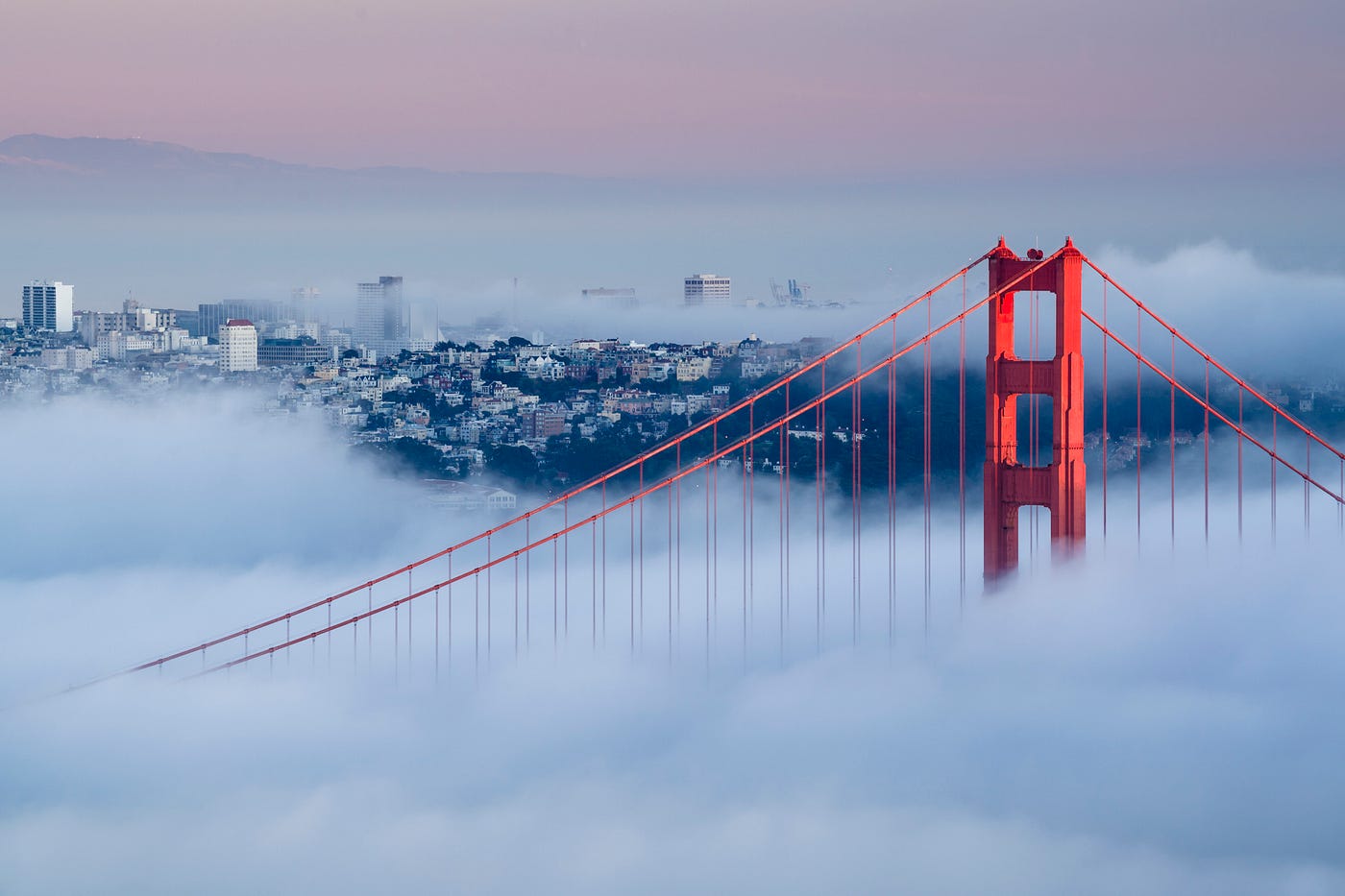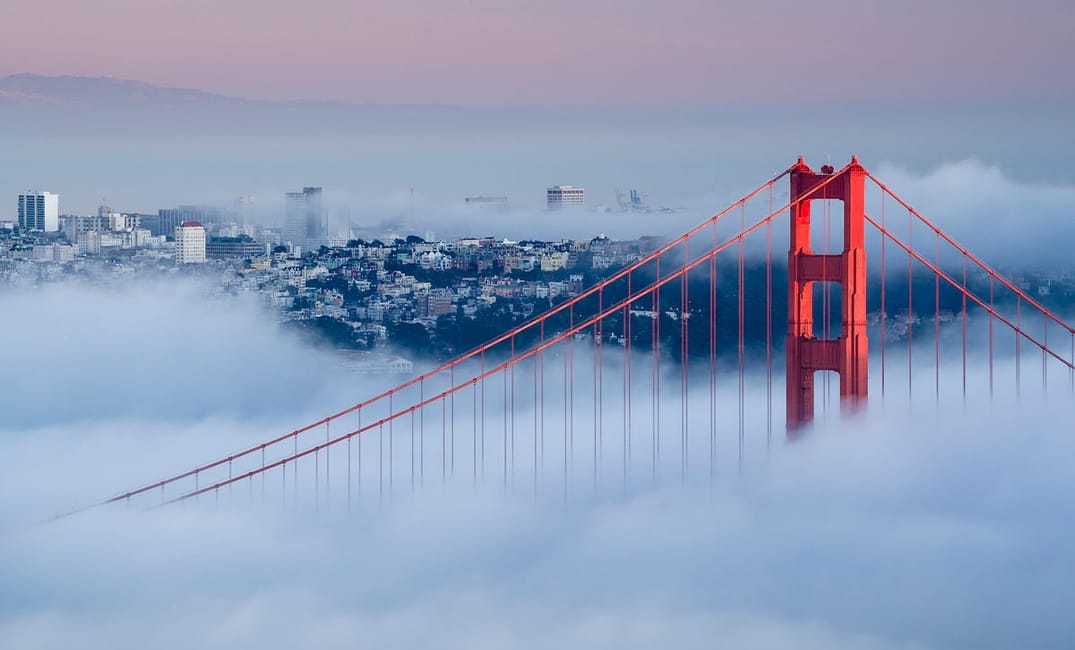FRIDAY FIVE

By Matt Charnock, Editor-in-Chief of The Bold Italic
In my comparatively short time on this planet, I’ve never lived in a metropolis with such a thick network of hyperlocal news outlets. On any given day, no matter the hour, there’s an endless number of rabbit holes to fall into. Should you emerge from them with your limbic system relatively unscathed, you might find yourself, somehow, more confused about what’s happening in San Francisco.
(There’s a contentious, embroiled race for CA’s Assembly District 17 currently underway; Amazon just pulled the e-brake on developing its new $200 million SF warehouse, because it literally won’t pay people a living wage; Mayor Breed’s conflicted emergency order in the Tenderloin ended last week — and, aside from the TL Linkage Center, was an impressive failure; San Francisco Zoo’s beloved 18-year-old Sumatran tiger Leanne passed away this week.)
Hell: I cut my teeth writing and reporting and throwing out hot takes on San Francisco’s myriad of happenings… and I’m overwhelmed by the sheer amount of relevant news fed to me on a daily basis. I can only imagine what it must feel like for, say, someone else whose WFH job isn’t to sift through Twitter timelines and read various news/press releases half the walking day.
All of this is to say, dear reader — who likely just now became conscious of their poor posture while sat atop an office chair — that in my ostensibly humble and well-informed opinion, here are the five San Francisco subjects of note to pay attention to at this current juncture. But as mercurial as the seven-by-seven is, who knows: These touchpoints could change by next week. Or this weekend. Maybe tomorrow. Perhaps EOD.
Regardless of SF’s capricious nature, these five things currently enveloping San Francisco should be on every WFH resident’s radar.
The current state of SF’s Parklets is looking very, very good
San Francisco’s 1,200-plus parklets aren’t going anywhere. With legislation passed both on a state and city level last year, the existence of these sidewalk-hugging al fresco dining areas — all of which were made possible by the City’s Shared Space Program that launched in 2020 as a means to help bolster local restaurant and bar sales amid a shuttering of indoor dining — is firmly cemented in our post-pandemic future. However, that’s not to say they won’t be subjected to new guidelines and permit fees.
In a digestible nutshell: All of San Francisco’s current collection of parklets must apply for a legislated Shared Spaces permit by March 31, if they wish to operate on or after July 1, 2022. In order for the said application to be approved for any single parklet, the erected structure must have, per the City, “neighbor consent,” a “site plan” that goes into detail how the parklet will be “safe and ADA accessible,” and post a 10-day public notice at and around the proposed site — a formality that all San Francisco bars and eateries must abide by, no matter if they’re located indoors or outdoors.
Also, come July 1st, the “Pandemic Shared Spaces Program’’ ends and will move to become the “legislated Shared Spaces Program,” which will usher in new criteria that might require parklets to resize or relocated, as deemed necessary by Vision Zero’s requirements around high-injury intersections.
Rents are going up, y’all — but you’re likely protected from the worst of those increases
Annual leases for one-bedroom rental units in SF are near pre-pandemic levels now. Rents in San Francisco are up almost 16% from February of 2021 — to a median of $2,340 for a one-bedroom apartment and $2,710 for a two-bedroom — Apartment List found in a data report, which they based on an analysis of Census data and trends among rental listings on its site. Moreover: the available stock of studio apartments in the city has drastically fallen, signaling a post-pandemic swing in rental prices. Anecdotally, both private property management companies and independent landlords have noticed, perhaps for the first time since March of 2020, competition in the rental market.
Those days of “pandemic priced” units are long gone; prior negotiation tactics have effectively dissolved as people again flood into the seven-by-seven. But for those of us who are currently renting in the city — a cohort that’s about 60% of SF’s entire population — it’s a good time as any to be reminded that odds are, you’re covered under the San Francisco Rent Ordinance. Or in other words: Babes, you probably are protected by rent control measures, and you should familiarize yourself with them.
For this year, the San Francisco Rent Board approved the annual allowable increase amount, which is effective from March 1, 2022, through February 28, 2023, is 2.3%. If your leased domicile isn’t a single-family home and has a date-of-occupancy going back to at least dating to before June 13, 1979, you’re covered. And can count your lucky stars that you won’t see any hellacious impact on your rent as market-rate leases begin increasing.
As for those not covered by SF’s local rent ordinance, you might be protected from the most egregious of rent hikes through CA’s state rent control law.
Under the new state legislation, landlords can only raise rents by 5% (plus the local rate of inflation) for any existing tenant in multi-unit residential buildings with occupancy dates dating back fifteen years; this protection, however, is on a rolling timeline. Units, for example, with dates of occupancy between 2008 and 2023 currently fall under CA’s rent control, but that will change to 2009 to 2024 come next year.
Did you know SF recently released a new plan to fight the climate crisis?
The San Francisco Department of the Environment released a new version of its Climate Action Plan in October of 2021, helping pave the way for the city to survive rising sea levels and warmer temperatures, both of which are inevitable at this point.
The strategy, in a nutshell, layouts out specific plans and milestones needed for the City to meet its emissions reduction goals, which include decreasing greenhouse gas emissions by over 60% by 2030 — with San Francisco then becoming a “net-zero” urban metropolis by 2040.
“With global climate change rapidly accelerating and affecting us now, we must address this urgent challenge and work together to create a future where we can all thrive,” said Mayor London Breed in a press release. “San Francisco’s Climate Action Plan takes our ambitious goals and lays out the strategies and actions we need to take to turn those goals into reality. There’s a lot of work ahead, but I’m hopeful for the future. If our response to the COVID-19 pandemic has shown us anything, it is that when San Franciscans stand together, we can meet any challenge.”
In total, the action plan identifies 31 strategies and 159 supporting actions to help achieve the City’s new environmental commitments — all of which are codified in the 136 page PDF.
Here’s a rough breakdown of the larger goals of the plan:
- Reduce emissions 61% below 1990 levels by 2030
- Reach net-zero emissions by 2040, which is defined as reducing emissions 90% below 1990 levels and sequestering the rest in natural solutions like trees and green spaces
- Use 100% renewable electricity by 2025 and phase out all other fossil fuels.
- Electrify all existing buildings
- Increase compact infill housing production near transit
- Reduce food waste and embrace plant-rich diets
Now it’s our jobs as residents of this wonderfully maddening municipality to hold City officials accountable in steering San Francisco away from the worst of the climate crisis.
San Francisco’s other pandemic: drug overdoses
2020 saw two pandemics emerge: one spurred by a novel pathogen, the other created by the widespread manufacturing (and use) of the synthetic opioid fentanyl. In San Francisco specifically, nearly 700 people lost their lives to fentanyl overdoses in 2020, marking an all-time high since the opioid crisis began about twenty years ago. At least 46 deaths related to drug overdoses have been confirmed so far in 2022, which follows last year’s 650 drug overdose-related fatalities documented in San Francisco.
Most recently on March 5th, a series of drug-related deaths — overdose fatalities that involved a 30-year-old man, a 34-year-old woman, and a 37-year-old man — rocked the Mission District.
District 9 Supervisor Hillary Ronan, who represents the neighborhood on the city’s board of supervisors, was debriefed on the tragedy by San Francisco firefighters, saying how “awful” the current overdose crisis is in San Francisco — “the tragedy of this crisis knows no bounds.”
“We need to be hitting [the drug overdose crisis’ from every angle,” Ronen said in a Tweet. Ronen, too, has previously shown her support in creating a multi-prong strategy to address the health crisis, which would include operating safe consumption sites, having Narcan — a nasal narcotic overdose treatment meant to be used in emergency situations — widely available, and offering drug testing strips that people can use to mitigate the risk of accidentally consuming fentanyl.
It’s important, however, to note when discussing drug addiction that it’s a disease. Addiction is an illness. That illness is exacerbated by less-than-ideal living situations.
It can be a means of numbing to escape the dehumanizing realities of being unhoused; of combating chronic pain; of coping with multifarious traumas that turned their lives upside down. Rates of drug addiction are tied to those around episodes of human suffering, as well as accessibility to illicit substances.
Addressing San Francisco’s drug overdose crisis requires a multi-pronged strategy. It’s not as easy as simply removing these drugs off the street and out of users’ hands. It’s about addressing the underlying issues that brought those drugs into the city and in the hands of residents… one at a time. Addiction is not monolithic, no. But there are common denominators — generational homelessness, mental health emergencies, outright poverty — that can be extrapolated onto methods to help better understand and mitigate this public health crisis.
When you inevitably do come across an individual suffering from addiction on a San Francisco treat, treat them with benevolence. Don’t vilify their suffering.
The in-limbo future of a (more) car-free, pro-pedestrian SF
San Francisco streets, especially those around the Tenderloin and Civic Center, are notoriously dangerous for pedestrians. In 2019, 29 pedestrian fatalities were recorded in the city — a three-year-high and about six more recorded deaths from the prior year. A report from Vision Zero SF recorded at least 13 pedestrian fatalities in 2020, sitting as an over 50% reduction from the previous year.
The large reasons for that reduction? Less congested streets, a global pandemic that forced denizens of the city inside, and, of course, San Francisco’s Slow Streets Program, which opened over two dozen car-free corridors across the seven-by-seven. (Many of those car-free streets, too, were erected in “high injury” zones found in Vision Zero SF’s most current network map.) Though some have since reopened as hybrid models (that don’t fully please any one single party) or outright shuttered, the remaining corridors exist as a pandemic-born balm we should high-key continue allowing to soothe our minds and bodies in a world recovering from Covid-19.
The benefits of car-free streets — like JFK Drive, which has become a central point of activism for keeping the City’s Slow Streets program alive for the foreseeable future — go beyond pedestrian safety. Inundating streets with fewer automobiles (replaced instead by walking and cycling passerby) is a unanimous win for the environment, as well. In the absence of omnipresent human traffic, local wildlife has flourished; coyotes roam our streets and reduced traffic noises have (in theory) made it easier for bird populations to attract mates, understand conspecific songs, and maintain social bonds.
Private car ownership isn’t the future of getting around dense cities. That tomorrow sits in the promise of repurposing our roadways to become more pedestrian-friendly and pro-public transport.







